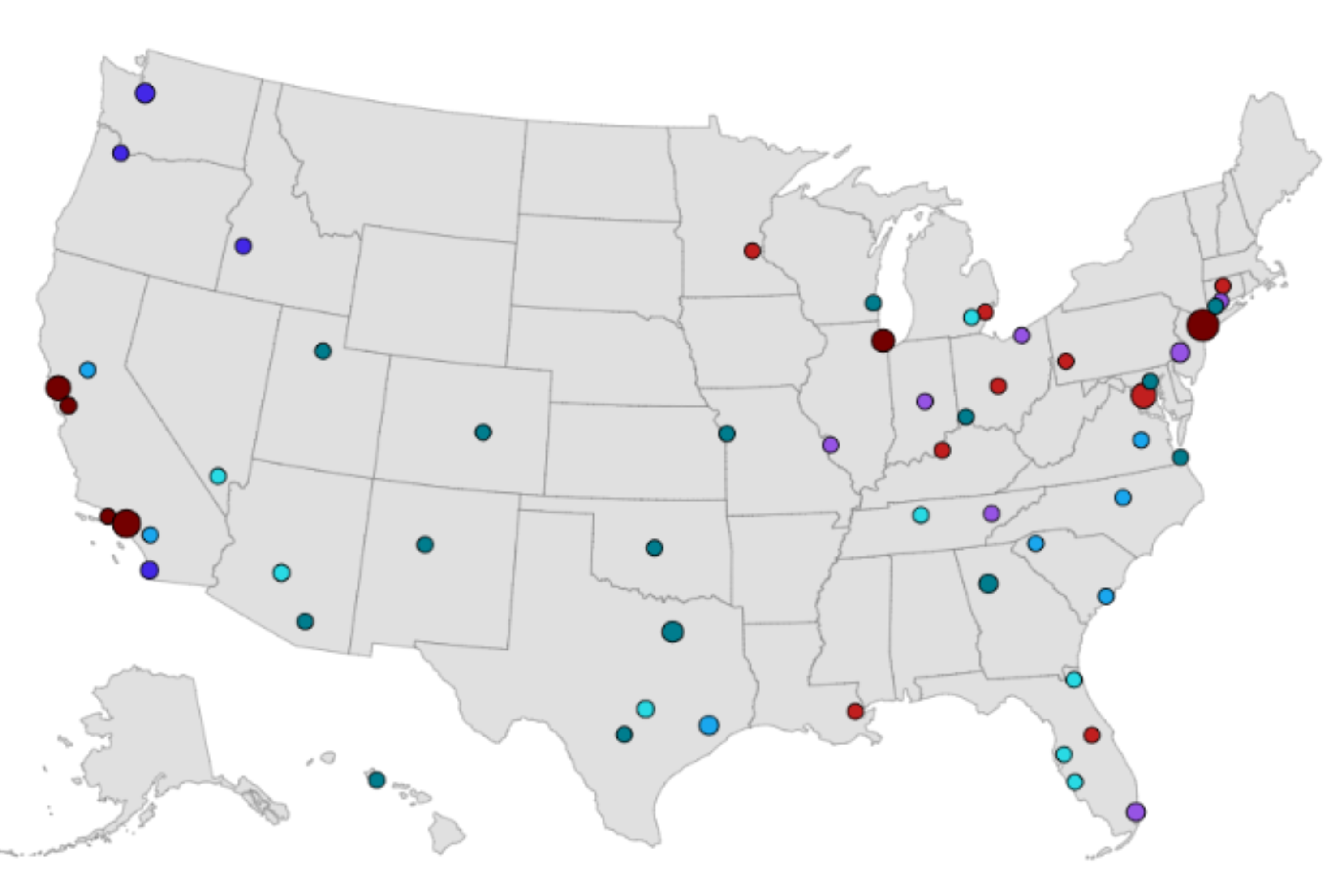You can't blame California for not being ambitious. In 2008, Gov. Arnold Schwarzenegger set the bold goal that by 2020, a third of the state's power would come from renewable sources. Not bad for the nation's most populous state and among the world's top 10 largest economies. At the time, it was a target miles ahead of any other state, and a fairly risky one at the beginning of a would-be global recession that would drive the Golden State deep into the red.
It's easy to see why Schwarzenegger thought it was possible. Earlier that year, oilman T. Boone Pickens characterized the Southwest U.S. as the Saudi Arabia of solar power, offering the choicest elevation and sun strength in the world for optimal power generation. On that, everyone agreed. Where to put the solar panels continues to be a different story. Everyone's for renewable energy, just not when solar or wind farms block their view or drive down property values.
California Sen. Dianne Feinstein revived the debate last month with a wilderness designation bill intended to rope off more than half a million acres of Southern California land between Joshua Tree National Park and the Mojave National Preserve, restricting the area to both solar developers and off-road vehicles. Such prime desert land shouldn't be touched, she has argued, and the accentuated effects of global warming will make that territory increasingly valuable to desert wildlife.
That kind of reasoning, though, has some energy developers accusing Feinstein of pulling the NIMBY card—wanting renewable energy at any cost, but hollering "not in my backyard" when looking at the map. A valid criticism, perhaps, considering all of the protected land would be in California, even though the Mojave's prized ecosystem extends into parts of Nevada, Arizona, and Utah.
Feinstein cites two reasons why her proposed area is different. One is that the public land in question was donated to the government by conservation groups in 2003 under the condition that it be protected. The other reason is loftier. The western Mojave houses several endangered species, a stretch of the historic Route 66, sweeping desert vistas, lava flows and the ancient Amboy volcanic crater. A blanket of solar panels could threaten it all. Feinstein's staff would not respond on the record to criticism of the bill, but directed a reporter to the senator's public statements. In December, she said that there were many places in the California desert "essential and appropriate" for renewable energy, "but there are also places that future generations will thank us for setting aside."
California has other lands, both federally and state owned, on which solar producers could relocate their projects. But no place is perfect; the sun doesn't shine as brightly in California's Central Valley and the desolate areas of Arizona or Utah are either too mountainous or too far from consumption centers to make transmission viable. Get too close to populated areas like San Bernardino and people complain that the infrastructure ruins the landscape. "There's a compelling case that any land in the Southwest is too environmentally rich to develop on; but the fact is, if we want renewable energy, they have to go somewhere," says Jim Baak, director of utility-scale policy with California advocacy group Vote Solar. Speaking at Yale in 2008, Schwarzenegger was more blunt: "They say that we want renewable energy, but we don't want you to put it anywhere.I mean, if we cannot put solar power plants in the Mojave Desert, I don't know where the hell we can put them."
Despite the disagreement, the measure already has considerable support, especially after Feinstein redrew the boundaries of the land to accommodate developers who were unhappy with the original draft. Nearly a dozen influential conservation and wilderness groups have signed on to Feinstein's bill.
More notable, however, is the parties who disagree, many of them solar associations and power companies. Far from searing and critical opposition, the reaction has been more of a grumble. Of 130 applications for solar projects currently under review by the California Energy Commission, just over a dozen fall within Feinstein's proposed area. With federal subsidies and incentives to move elsewhere, none have complained too loudly. As environmentalists, they also realize that debating renewable energy vs. environmental protection, they're arguing amongst friends.
Some of the bills backers on the Hill say it's too early to gauge senate support of her bill, although it won't hit the same legislative roadblock as other contentious issues like health care or cap and trade. If it does pass, however, less available land makes the NIMBY issue even more difficult to address. If it can be addressed at all. The newer acronym cheekily floated by frustrated renewable energy developers is "BANANA." Build absolutely nothing anywhere near anyone.
Uncommon Knowledge
Newsweek is committed to challenging conventional wisdom and finding connections in the search for common ground.
Newsweek is committed to challenging conventional wisdom and finding connections in the search for common ground.
About the writer
To read how Newsweek uses AI as a newsroom tool, Click here.








